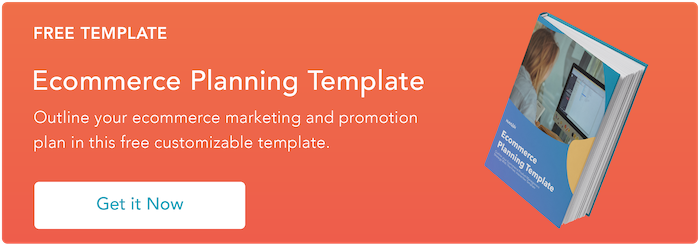Online Retail Businesses
Online retail is more or less a staple of modern life — anyone with access to the internet can connect with almost any number of businesses pushing their products over the web. According to etailinsights.com, there are 7.9 million "e-tailers" worldwide — with 2.1 million operating in the U.S. alone.
It's not outrageous to assume that you've recently purchased something from an online retail outlet — and that trend doesn't appear to be slowing any time soon. So long as the world wide web exists, retail businesses are going to leverage it to expand their reach.
So now, you might be saying, "Wow! Online retail sounds amazing and viable! I would love to start one of these companies! But how do I make that happen?" Well, we've prepared a six-step list that covers the fundamentals of putting an online retail business together.
How to Start an Online Retail Business
Starting an online retail business can be tricky and labor-intensive. A lot goes into getting one together — but if you know the bases you need to cover and approach the process systematically, it can be relatively smooth.
Let’s take a look at six steps you need to take to start an online retail business.
1. Pick an industry.
This one is pretty obvious, but it's still worth explaining a bit. Businesses don't just pop up by accident — you need to have something to sell before you can actually sell it.
If you're starting an online retail outlet, you probably know what your offering is going to be. But if the prospect of being an online entrepreneur excites you — and you don't have your big idea quite yet — you should ask yourself a few key questions, like:
- What do I know more about than most people?
- What have I done professionally?
- What do I love to do?
- What companies do I buy from the most?
- What industries am I most familiar with, and what are some popular trends within it?
Once you've dug deep and gotten a feel for what kind of business would mean most to you, you need to familiarize yourself with your will-be competitive landscape. What does your market look like? Who would you be selling to? Who would you be up against? How are they performing? What does pricing look like across your ideal industry?
Pore through as much industry-relevant content as you can — whether that be through magazines, blogs, podcasts, or any other medium that can give you a fleshed-out picture of your market. If your competitors have any collateral like case studies, take a close look at it.
One way or another, dig in. Take the time to know what your preferred industry is like and determine whether you can carve out a place in its competitive landscape. Once you've gotten a feel for that, you can definitively decide on the kind of online retail business you want to start.
2. Pick a product.
Once you have a feel for the online retail space you want to enter, you need to land on the specific product you're interested in selling. In a similar vein as the previous point, you're going to need to conduct some thorough research if you want to do this right.
You want to land on a product that has active demand, a breachable market, and viable logistics. Your offering needs to be producible at scale, and it has to be financially feasible for you to produce and distribute it consistently.
You also have to have some kind of picture of the place within your competitive landscape you're trying to occupy — you need to differentiate if you want to hack it in your industry long-term. Pin down what, exactly, makes your product unique, and go from there.
3. Identify the needs of your potential customers
Let's say you've figured out the "what" behind what you want to sell. Now, it's time to focus on the "who." — after all, businesses can't exist without customers.
Every product is tailored to solve something. Regardless of whether the problem behind an offering is essential or trivial, it always rests on some kind of pain point — and the success of your business leans primarily on how effectively you can address it.
You need to understand why consumers buy products like yours. Getting a feel for that generally takes a lot of thought, research, outreach, and flat-out effort. You might want to reach out to as many ideal customers as you can to get a pulse for why they're interested in your industry.
You could also refer to the industry-specific publications I mentioned above. If people can publish reviews of similar products, check those out and identify themes that consistently pop up — both positive and negative.
You need to know who you're selling to in and out if you want to reach them effectively. Familiarize yourself with your target base's needs, interests, preferences, traits, and quirks — that intel with shape the buyer personas that will ultimately guide your sales and marketing efforts, down the line.
4. Contact suppliers.
Whether you choose to sell other people’s products or create your own, you’ll still have to work with vendors and suppliers. Determine what's most important to you before researching and contacting online retailers.
Perhaps your number one concern is keeping prices low — if that's the case, you will want to find the cheapest supplier of whatever it is that you need. Maybe your focus is on quality and you’ll need to find the absolute best supplies you can. You may also be looking for things like:
- Made in the U.S
- All-natural
- Cruelty-free
- Responsibly sourced
- Environmentally friendly
Figure out what your values and your priorities are and then choose your suppliers based on what you want to get out of the relationship.
Keep in mind that this will likely be the most expensive aspect of starting your business. Determine your budget and desired output before contacting suppliers — that way, you don’t get lulled into spending more than you have.
5. Create your brand.
Now, it’s time to get creative. The best product in the world won’t do anyone any good (or make you any money) if no one knows about it. Your brand will communicate who you are, what you do for your customers, and what you stand for.
If you have available funding, now’s a great time to consult a branding expert who can help you develop your company the right way. They will work with you to create a company name, a logo, the look of your branding, and the packaging for your products.
If you don’t have money to spend on a branding expert, you can consult with friends and potential customers, do some of the work yourself, trade services or products with a branding specialist, or create your branding on a shoestring using sites like Upwork or 99Designs.
When brainstorming brand names, check with a company like Bluehost or GoDaddy to make sure the corresponding URL is available. You can also use a brand name generator to create a unique name for your business. If your brand could easily be misspelled, purchase the correct URL and any URLs it might be mistaken for — so you can redirect them to your site.
You’ll also want to snag the social media accounts with your desired name. You don’t have to start all of them at once — or even use all of them — but you should secure the names so no one else can take them.
We won’t discuss the legal steps necessary to create an online retail business in this piece, however, you should talk to an attorney or do your own research to make sure that you are meeting all federal and state guidelines for opening a business.
6. Set up your website and shopping cart.
Unlike a conventional brick-and-mortar storefront, your website will have to have a way to accept orders and take money. This is an online shopping cart, and you have a number of options that can be installed on your website, like Shopify, WooCommerce, and BigCommerce.
If you are not tech-savvy, you may want to hire a web designer to set everything up for you. If you’ve got the time, skills, and desire to learn, you can set up your own website and connect your shopping cart.
No matter what option you choose, make sure that your site looks professional, is easy to navigate, loads quickly, and works. That means testing it out yourself and enlisting some friends. The last thing you want to see is an email or chat from an irate customer who encounters problems with your site — and you’d be lucky if they contacted you and didn’t just walk away.
Online Retail vs. Ecommerce
While online retail and ecommerce are very similar, there are a few slight differences. An online retailer is similar to a brick and mortar in that customers can browse products on an online store and find the color, size, and style they are looking for. Online retail companies include Warby Parker, Ikea, and Patagonia.
According to sellerschoice.com, "E-commerce also involves electronic transactions, but the difference is that it involves many other services that are not physical, such as marketing. Often, it is represented by platforms that provide a space for other merchants to sell their products to consumers for a fee, which is usually a commission." Think about a site like etsy.com that allows people to open up their own "shops" on their site.
Online Retail Marketing Strategy
Once your online retail store is set up, you’ll need to create a strategy to bring people in your "door." How will you attract them to your site and encourage them to buy while they’re there?
Let’s take a look at a few different ways you can drive traffic to your website:
- Use proper keywords. What are your potential customers searching for when they open Google? Google’s job is to connect searchers with answers. Using the right keywords on your website will let the search engine know that you are the right business to connect to people searching.
- Use Facebook and Google advertising to target the traits of your "ideal customer" and advertise to those who meet your qualifications. Don’t forget to take into account where your potential customers spend their time.
- Become the expert. Consumers often search for answers before they know exactly what their problem is. They may not have words to describe the challenge or know what options are out there to remedy it — but you do. Create content like blogs and quizzes to provide useful information that establishes you as a trusted expert and links to your products or an email capture so you can keep in touch.
Once they’ve landed on your website, how do you make sure that they don’t leave without making a purchase?
- Offer interactive experiences. Consider items like makeup or clothing. Without guidance, it can be daunting for a consumer to select products without seeing them and trying them on. Offer information and experiences to draw your customer in. For instance, a makeup company could offer a place to upload a photo and then "try" out different makeup looks. Not only would consumers be more comfortable with their choices, but you could also make recommendations for products they never would’ve thought about on their own.
- Create video tutorials. Will customers have to put anything together when your product arrives? Will there be usage instructions or helpful hints that will make their experience more pleasant? Create videos to show them how to put products together, use them properly, or use them in ways they wouldn’t have thought of. If your product is food or food-related, include videos of recipes. If you’re selling makeup, show customers how to put it on properly. The possibilities are endless, and you will score points with consumers if videos are entertaining and don’t drone on. It’s okay to let your personality shine through.
- Use carefully curated content. This encompasses both visual and written content. Your photos and images should accurately reflect the tone of your product and the personality of your brand. Any website or blog content should do the same and clearly communicate what consumers will get out of purchasing your products.
- Optimize the customer experience. No matter what type of business you run, you should always be asking yourself a very important question: "Is it easy for customers to do business with me?" Your website should be clearly laid out and able to load quickly. Your shopping cart should be simple to navigate and trustworthy. Customer service should be available to them at every step of the process whether through live chat, chatbots, email, or a phone number to call. When a person walks into a brick-and-mortar store, you have the opportunity to dazzle them with your personality. To run a successful online retail business, you’ll need to find a way to do that when they "walk" into your virtual store.
Don’t be afraid to make changes. Chances are, even with all your research, you won’t get this 100% right on your first try. Utilize Google Analytics to determine what is working for your business and what isn’t. When you examine this data, you’ll know where your traffic is coming from (which can save you money in poorly structured ads), how long people spend on your site, how often they make a purchase, and much more.
When the desire to start a business strikes, opening an online retail store is a great way to reach a large number of potential customers with relatively low overhead. Do your research, create a plan, and then remember that you are a business owner. You’ll likely have to work very hard to get your business up off the ground, but when you look back and see what you’ve created, you’ll know you made the right decision.

.jpg)

![How to start a business: A startup playbook for entrepreneurs [template]](https://53.fs1.hubspotusercontent-na1.net/hubfs/53/How-to-Start-a-Business-Aug-11-2023-10-39-02-4844-PM.jpg)

.jpg)
-2.webp)
![What is a Silent Partner? [+How to Find One For Your Business]](https://53.fs1.hubspotusercontent-na1.net/hubfs/53/silent-investor-1-20250124-8605371.webp)
.png)



